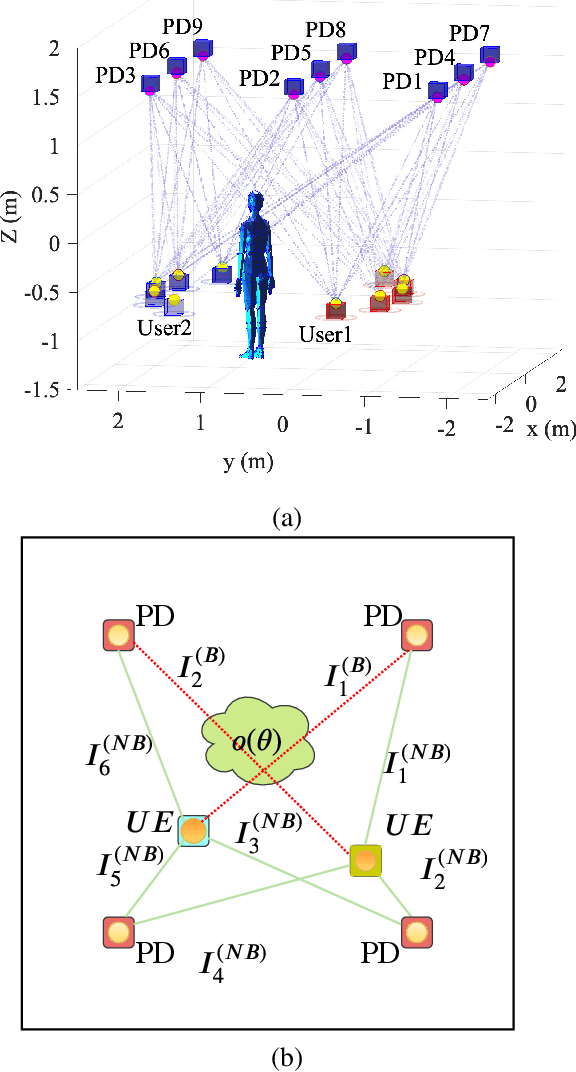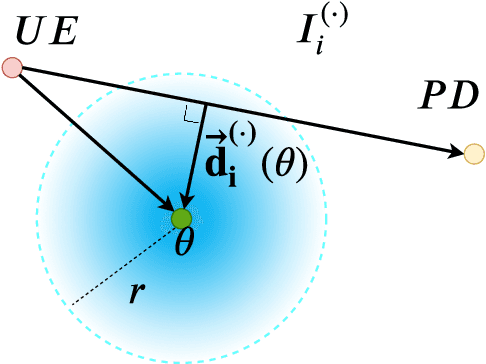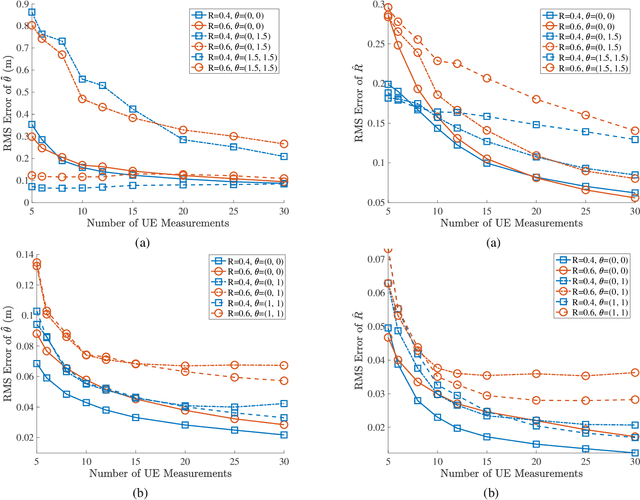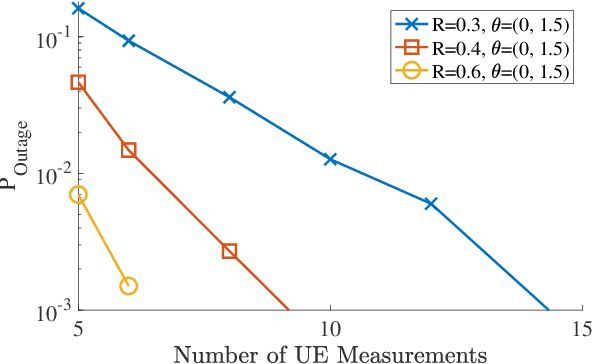Hamid Hosseinianfar
Optical Channel Impulse Response-Based Localization Using An Artificial Neural Network
Nov 04, 2022Abstract:Visible light positioning has the potential to yield sub-centimeter accuracy in indoor environments, yet conventional received signal strength (RSS)-based localization algorithms cannot achieve this because their performance degrades from optical multipath reflection. However, this part of the optical received signal is deterministic due to the often static and predictable nature of the optical wireless channel. In this paper, the performance of optical channel impulse response (OCIR)-based localization is studied using an artificial neural network (ANN) to map embedded features of the OCIR to the user equipment's location. Numerical results show that OCIR-based localization outperforms conventional RSS techniques by two orders of magnitude using only two photodetectors as anchor points. The ANN technique can take advantage of multipath features in a wide range of scenarios, from using only the DC value to relying on high-resolution time sampling that can result in sub-centimeter accuracy.
Cooperative Object Detection and Parameter Estimation Using Visible Light Communications
Mar 17, 2020



Abstract:Visible light communication (VLC) systems are promising candidates for future indoor access and peer-to-peer networks. The performance of these systems, however, is vulnerable to the line of sight (LOS) link blockage due to objects inside the room. In this paper, we develop a probabilistic object detection method that takes advantage of the blockage status of the LOS links between the user devices and transceivers on the ceiling to locate those objects. The target objects are modeled as cylinders with random radii. The location and size of an object can be estimated by using a quadratic programming approach. Simulation results show that the root-mean-squared error can be less than $1$ cm and $8$ cm for estimating the center and the radius of the object, respectively.
 Add to Chrome
Add to Chrome Add to Firefox
Add to Firefox Add to Edge
Add to Edge